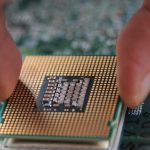Tesla has introduced a new software-driven enhancement to airbag deployment, seeking to raise in-cabin safety standards for its vehicles. The update aims to leverage the company’s Tesla Vision camera system, providing more accurate real-time data to inform airbag deployment during frontal collisions. Recent advancements in vehicle software updates have allowed automakers like Tesla to refine key safety features without requiring changes or upgrades to physical hardware. This approach enables Tesla owners to receive the latest safety improvements remotely, distinguishing the brand in the evolving automotive technology landscape.
Looking at earlier reports on Tesla’s focus, much of the attention revolved around remarkable crash survivability and high safety ratings, including stories of Cybertruck and Model Y withstanding severe accidents. However, prior safety upgrades largely centered on passive protection and strong vehicle architecture rather than preventive digital enhancements. The current update, by utilizing real-time visual input, signals a move from structural resilience towards proactive electronic safety management—a shift not previously emphasized in Tesla’s updates. Compared to traditional methods, this software-based enhancement could represent a meaningful trend in automotive safety innovation, extending protection capabilities via continual updates rather than physical redesign.
How Does Tesla’s New Airbag Enhancement Work?
The latest 2025.32 software update introduces a Frontal Airbag System Enhancement for the Tesla Model Y. Using Tesla Vision’s camera feeds, the system analyses on-road scenarios, allowing airbag activation parameters to adapt more quickly to emerging threats. The company describes the outcome as offering improved timing for airbag inflation and occupant restraint before impact occurs.
“This upgrade builds upon your vehicle’s superior crash protection by now using Tesla Vision to help offer some of the most cutting-edge airbag performance in the event of a frontal crash,”
Tesla stated while announcing the update.
What Models Receive the Enhanced Airbag Feature?
Currently, the feature is being rolled out exclusively to the Tesla Model Y. This limited introduction provides a testing ground for the technology’s effectiveness before potential expansion to other products in the brand’s lineup, including Model S, Model 3, and Cybertruck. Owners of eligible vehicles will receive the update automatically, without needing to visit a service center. Tesla highlighted this approach, noting,
“Building on top of regulatory and industry crash testing, this release enables front airbags to begin to inflate and restrain occupants earlier, in a way that only Tesla’s integrated systems are capable of doing, making your car safer over time.”
How Does This Update Impact Traditional Vehicle Safety Practices?
Through its vision-first approach, Tesla’s new update departs from legacy safety systems that rely mainly on pre-set crash sensors and programmed triggers. Integration with the vehicle’s camera-based autonomous driving systems allows for context-aware responses, theoretically improving injury prevention by adjusting restraint timing for specific accident circumstances. By facilitating these improvements over-the-air, Tesla reduces the downtime and cost associated with traditional service center modifications, making continuous enhancement more accessible to owners.
A major takeaway from this upgrade is the transition of automotive safety from purely mechanical design to a more software-defined model. While Model Y is the first recipient, the systematic data gathered from enhanced vision-based airbag deployment can offer feedback for further refinements across the fleet. Drivers stand to benefit from enhanced injury prevention protocols that progress as algorithms and camera systems evolve. As advanced driver-assistance technology expands, the industry may see greater emphasis on real-time, context-adaptive safety mechanisms, raising questions on how future regulations and standards will accommodate fast-paced software-driven developments.










